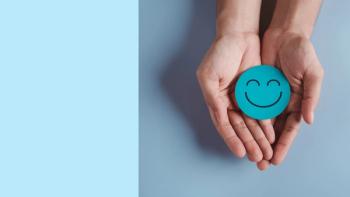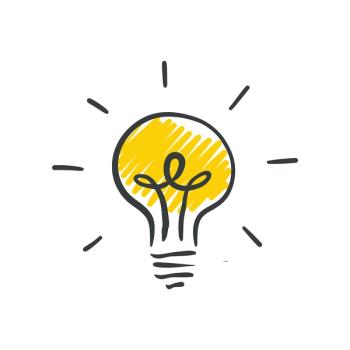
How to counter medical misinformation and support engaged patients
Healthcare practitioners face challenges combating health misinformation as patients increasingly rely on the internet for medical advice. Trust and communication are key.
In 2021, the American Health Information Management Association Foundation
This can sometimes be a challenge for healthcare practitioners, because health misinformation—information that is false, inaccurate, or misleading according to the best available evidence at the time—is abundant on the internet. Health misinformation is a significant obstacle in healthcare, as it can lead to misunderstandings, poor health decisions, and adverse outcomes for patients. In
Calling Dr. Google
Patients’ engagement in their personal health can be an advantage, with the proper guidance and support from practitioners. However, when patients consult “Dr. Google,” some websites may provide inaccurate or misleading content.
This issue of accurate versus inaccurate online medical information was highlighted during the COVID-19 pandemic. In 2021, the U.S. Surgeon General’s advisory
Challenges for Practitioners
Correcting misinformation requires time and effort: Practitioners are encountering longer visit times when there is a need to discuss internet-collected health information with patients. Patients can sometimes have a strong belief in and be adamant about the assembled misinformation, which can result in increased patient anxiety.
Practitioners who dismiss or criticize the online search efforts of patients may negatively impact practitioner-patient trust. It can also be a challenge to change patient perspectives when misinformation is deeply believed, even when the practitioner is providing information from a trusted source.
Addressing health misinformation with patients
Former American Medical Association (AMA) president Gerald E. Harmon, MD,
It’s often said that trust is the medical currency of healthcare, and in partnering with patients to help them understand medicine, practitioners are making deposits. Ruth Carrico, PhD, DNP, APRN, explained to the American Association of Nurse Practitioners (AANP) her view that
Patient Safety Strategies
Engaging with patients who are relying on health misinformation requires a thoughtful approach to ensure patient safety, retain trust, and promote health literacy. Here are some strategies practitioners can use:
- Listen to patients' concerns and beliefs without judgment. This fosters open communication and shows that you respect their perspective. By
actively listening to concerns and providing clear, evidence-based information, practitioners can build trust and encourage patients to participate in their healthcare journey. - Show
empathy and understanding toward patients' fears and misconceptions . Acknowledge their feelings and provide reassurance. - Use
plain language to explain complex medical terms in simpler language. Avoid medical jargon and ensure that patients fully understand the information being provided. To support this, applyuniversal health literacy precautions —an approach that assumes all patients may have difficulty understanding health information and therefore emphasizes clear, accessible communication for everyone. Clear communication helps prevent misunderstandings and misinformation. - Share reliable, evidence-based sources of information. Use reputable websites, peer-reviewed articles, and official health guidelines. (See the resources listed below.)
- Using the
Teach-Back Method, ask patients to repeat the information in their own words to ensure they have understood correctly. This helps identify any misunderstandings. - Use visual aids such as diagrams, charts, and videos to explain complex medical concepts. Visuals can make information more accessible and easier to understand.
- Gently correct misinformation by providing accurate information and explaining why the misinformation is incorrect. Use facts and evidence to support your explanations.
- Help patients develop critical thinking skills by teaching them how to evaluate the credibility of sources and recognize biased information. Critical thinking skills are essential in identifying and rejecting misinformation.
- Maintain a trustworthy and transparent relationship with patients. Be honest about what is known and what is still uncertain in the medical field. When patients are well-informed, they can actively participate in discussions about their care, leading to decisions that are aligned with their values and preferences.
- Schedule follow-up appointments to address any ongoing concerns and reinforce accurate information. Continuous follow-up and support maintain positive patient engagement.
Through these strategies, practitioners can effectively combat health misinformation and empower patients to make informed health decisions.
Reputable resources
These are reputable websites, known for their accuracy, credibility, and comprehensive coverage of health topics, where patients can find reliable health information:
- American Cancer Society (ACS): The ACS offers detailed information on cancer prevention, treatment, and research at
https://www.cancer.org . - American Heart Association (AHA): The AHA provides information on heart health, including prevention, treatment, and research on cardiovascular diseases at
https://www.heart.org . - Mayo Clinic: The Mayo Clinic offers expert advice on a wide range of health topics, including symptoms, treatments, and preventive care at
https://www.mayoclinic.org . - MedlinePlus: MedlinePlus, a service of the National Library of Medicine, offers reliable health information, including articles, videos, and links to other trusted sources at
https://medlineplus.gov . - National Institutes of Health (NIH): The NIH provides detailed information on medical research, clinical trials, and health conditions at
https://www.nih.gov . - WebMD: WebMD provides comprehensive health information, including symptom checkers, drug information, and articles on various health conditions at
https://www.webmd.com . - World Health Organization (WHO): The WHO offers global health information, including disease outbreaks, health statistics, and international health guidelines at
https://www.who.int .
For guidance and assistance in addressing any patient safety or risk management concerns, contact Patient Safety and Risk Management at
The guidelines suggested here are not rules, do not constitute legal advice, and do not ensure a successful outcome. The ultimate decision regarding the appropriateness of any treatment must be made by each healthcare provider considering the circumstances of the individual situation and in accordance with the laws of the jurisdiction in which the care is rendered.
Lisa M. McCorkle, MSN, MBA, RN, Senior Patient Safety Risk Manager, The Doctors Company
Newsletter
Optimize your practice with the Physicians Practice newsletter, offering management pearls, leadership tips, and business strategies tailored for practice administrators and physicians of any specialty.









